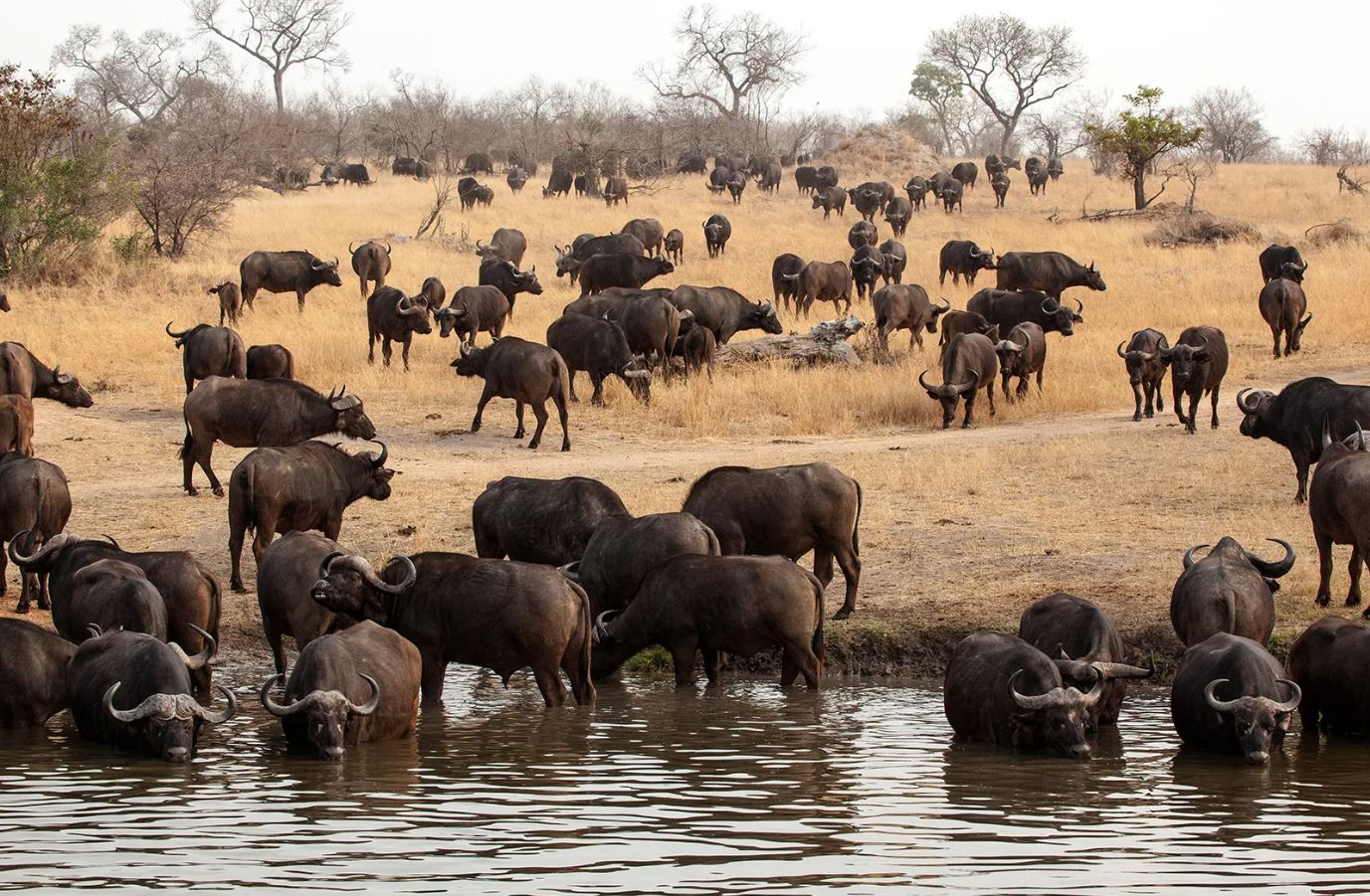What Is a Group of Buffaloes Called? The Surprising Name You Didn’t Expect!
When you see a group of powerful, majestic buffaloes thundering across the plains, what do you call them? A herd? A pack? A flock? While “herd” is a common term, the true answer might surprise you. If you’ve ever wondered, “What is a group of buffaloes called?” — you’re in the right place.
In this deep dive into buffalo social behavior and naming traditions, we’ll explore the surprising answer, the history behind these group names, how buffaloes interact in the wild and in captivity, and why understanding these animals is more fascinating than you might think.
The Short Answer: What Is a Group of Buffaloes Called?
The correct term for a group of buffaloes is a “herd.” But that’s not the whole story.
In some contexts, especially historical or poetic ones, you might also hear:
- Obstinacy (used for buffaloes, particularly African buffalo)
- Gang (less common, sometimes used informally)
- Troop (rare, more associated with wild African settings)
So while “herd of buffalo” is most accurate and widely used, the surprising name “obstinacy” gives buffaloes a more dramatic, almost mythical identity — and that’s where things get interesting.
Why “Obstinacy”? The Unique Behavior Behind the Term
The word obstinacy means stubbornness — a trait buffaloes are known for, especially the African species.
African buffaloes are:
- Highly territorial
- Incredibly resilient against predators like lions
- Known for defending each other fiercely
- Difficult to domesticate
This makes them a symbol of toughness and unwavering determination. Hence, a poetic or collective term like “an obstinacy of buffaloes” reflects these traits.
While this term is more literary and less common in daily use, it’s a colorful part of English animal group names, much like:
- A murder of crows
- A parliament of owls
- A crash of rhinos
These creative names often reflect behavior, mythology, or old English traditions — and “obstinacy” fits that mold beautifully.
Herds of Buffalo in the Wild
Buffaloes, whether African or American, are highly social animals that live in structured herds.
1. American Bison (Often Called Buffaloes)
Let’s clear something up first: the iconic animals seen in North American grasslands — often called “buffalo” — are technically bison, not true buffalo.
Still, in common American English, people say “buffalo,” and the term has stuck.
American bison herds:
- Can number from a few dozen to hundreds
- Are matriarchal (led by an older female)
- Include females and young males
- Adult bulls often roam alone or in bachelor groups, joining the herd during mating season
These herds move in unison, graze collectively, and rely on group dynamics for protection and migration.
2. African Buffalo
True buffaloes, like the Cape buffalo in Africa, are known for their large and complex social groups.
Cape buffalo herds:
- Range from 50 to over 1,000 animals
- Feature strong leadership and protection strategies
- Include subgroups based on age and sex
- Can form temporary alliances to fend off predators
Their cooperative behavior and willingness to defend members (even returning to help wounded individuals) give them a unique place among wild ungulates.
Evolution of Buffalo Group Names: Language and Culture
So why do animals like buffaloes get such creative group names?
These collective nouns stem from:
- Medieval English “terms of venery” (used by aristocrats in hunting)
- Folklore and symbolism
- Modern-day creative interpretations
Books like The Book of St. Albans (1486) listed hundreds of quirky animal group terms, many of which persist today.
While “herd” is the technical, biological term, colorful options like “obstinacy” capture the imagination — and help us think differently about animal intelligence and behavior.
Do Buffaloes Always Travel in Groups?
Not always. Let’s break it down:
American Bison:
- Young males often form bachelor groups
- Mature bulls may travel alone, especially outside of breeding season
- Females and calves stay in herds year-round
African Buffalo:
- Bulls may leave the main herd to form “dagga boy” groups (older, grumpy males)
- These loners often enjoy wallowing in mud and avoiding the stress of herd life
So while buffaloes are generally social, individual behavior varies depending on age, sex, and environmental factors.
Benefits of Herd Living for Buffaloes
Why do buffaloes stick together in the first place? The answer lies in survival and social bonding.
1. Protection from Predators
- Safety in numbers
- Shared vigilance — more eyes watching
- Defense mechanisms (e.g., circling injured members)
2. Social Learning
- Young buffaloes learn from older ones
- Social bonds help reduce stress and promote cooperation
3. Reproductive Success
- Herds create opportunities for mating and rearing offspring
- Structured mating hierarchies ensure genetic diversity
4. Navigation and Migration
- Traveling together helps with resource discovery
- Herds migrate in search of food and water during dry seasons
Buffalo Behavior Within a Herd
Buffaloes aren’t just mindless grazers. They display rich behaviors and complex relationships:
- Leadership: Older females (in both bison and Cape buffalo) often lead movement decisions
- Hierarchy: Age and experience determine rank
- Memory: Studies show buffaloes remember watering holes, routes, and threats
- Communication: They grunt, snort, and display body language for interaction and warning
In short, buffalo herds are mini societies full of structure and intelligence.
Buffaloes and Humans: A Shared History
Buffaloes have long been part of human culture — as food, symbols, and spiritual figures.
1. In Native American Culture
- The American bison is sacred to many tribes
- Symbol of abundance, strength, and unity
- Buffalo herds were central to survival and spirituality
2. In African Tradition
- Cape buffaloes are seen as powerful and dangerous animals
- Featured in folklore as defenders and warriors
- In some tribes, only brave hunters face buffaloes
3. Modern Conservation
- Once nearly extinct due to overhunting, bison now thrive in parks and reserves
- Cape buffaloes remain a key species in African conservation efforts
Whether revered or feared, buffaloes and their herds represent resilience and power across cultures.
Common Misconceptions About Buffalo Group Names
Let’s debunk a few myths:
❌ Myth 1: “A group of buffaloes is called a flock.”
- Truth: “Flock” is used for birds, not large mammals like buffalo.
❌ Myth 2: “Buffaloes always stay in large herds.”
- Truth: While they prefer company, bulls often roam alone or in pairs.
❌ Myth 3: “Buffalo” and “bison” are the same animal.”
- Truth: Not quite! “Buffalo” in Africa and Asia refers to a different genus than the American bison.
Still, “buffalo” remains accepted in American English for the iconic bison — so don’t worry if you use the term interchangeably.
Fun Facts About Buffalo Herds
Let’s wrap up with some fascinating tidbits:
- A bison stampede can reach speeds up to 35 miles per hour
- Buffaloes can recognize individual herd members and even grieve the loss of close companions
- African buffaloes have been seen voting on travel direction by standing and facing where they want to go
- Some herds migrate hundreds of miles across savannas or grasslands
Their strength lies not just in size, but in their unity, memory, and strategy.
Final Thoughts: A Herd or an Obstinacy?
So, what is a group of buffaloes called?
The answer is:
✅ A herd — the most accurate and scientifically accepted term
✅ Sometimes, an obstinacy — a poetic and powerful alternative
Understanding the terminology gives us more than just trivia—it opens a door to appreciate the strength, intelligence, and social lives of these incredible animals.
So the next time you see a group of buffaloes grazing or charging across a field, remember: they’re not just a “herd” — they’re a force of nature.
FAQ: What Is a Group of Buffaloes Called?
Q: Is “herd” the only correct term for a group of buffaloes?
A: “Herd” is the standard term, but “obstinacy” is a poetic alternative occasionally used in literature or creative writing.
Q: What’s the difference between buffalo and bison?
A: American bison are often called buffaloes, but true buffaloes include African Cape buffalo and Asian water buffalo. They’re different species, though the term “buffalo” is widely used for all.
Q: Do buffaloes live in groups year-round?
A: Females and young buffaloes usually do. Mature males may live alone or join bachelor groups, especially outside of breeding seasons.
Q: Why is the term “obstinacy” used for buffaloes?
A: It reflects their famously stubborn, determined nature — especially in the wild when defending their group or territory.
Q: Are buffalo herds dangerous?
A: Yes. Especially Cape buffalo herds. They’re known to charge when threatened and work as a team to protect each other.




